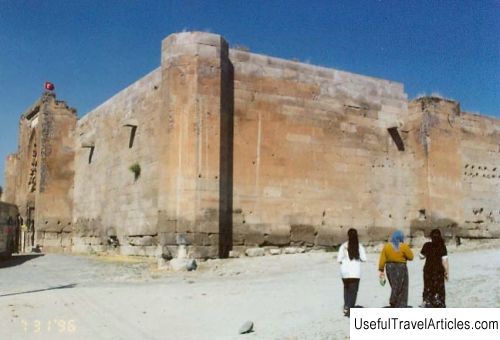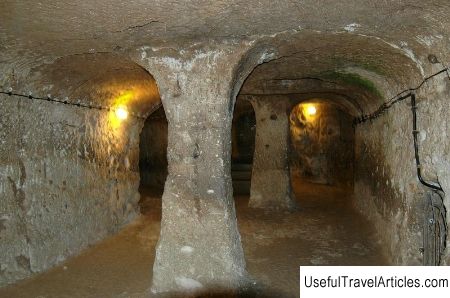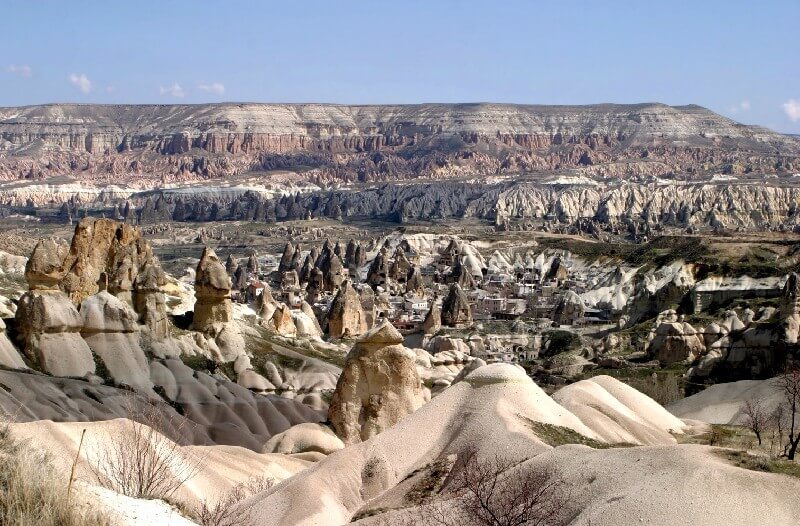Caravan sarai Cappadocia description and photos - Turkey: Cappadocia
Rating: 9,3/10 (7805 votes) 
Caravanserais of Cappadocia description and photos - Turkey: Cappadocia. Detailed information about the attraction. Description, photos and a map showing the nearest significant objects. Photo and descriptionThe region of Cappadocia was located on the Great Silk Road (trade route from Europe to Asia Minor) and was repeatedly subjected to robberies and raids, as a result of which, for greater safety, the local people moved to underground cities , and Christians who lived by the rocks took refuge in rock monasteries, churches and cells. For this reason, many inns have appeared here. A caravanserai or caravan house is large public buildings located on important trade routes in the East, in cities, on roads and in uninhabited places, which served as a shelter, overnight and a parking area for travelers and trade caravans. Sometimes they are luxuriously built, but without utensils, as a result of which the traveler must bring bed and carpets with him, as well as supplies for himself and his animals, there is only water, sometimes brought from afar, at great expense. Often a caravanserai is a rectangular house with a well in the middle. When building, the possibility of attack by robbers is often taken into account. The operating caravanserais are now located only in Persia, but they are gradually disappearing there due to the construction of better roads. In eastern Asia Minor, many of their ruins remain. A striking example of this type of architectural art of the local region is “Agzykarahan, built in 1231 on the way from Nevsehir to Aksaray near Kayseri, which is one of the richest in the world haven birds - Kichi Jenneti (Paradise for birds). It dates from the Seljuk period and is currently open to the public. Six kilometers north and five southeast of Avanos, Along the new road to Kayseri in the Dams Valley, there is a carefully restored and beautiful Sarukhan caravanserai of the Seljuk period, one of the largest in Anatolia. A barn means a palace. It was built in 1249 under Sultan Izzettin Keykavus II from stone blocks of yellow, pink and yellow-brown color. For a small percentage of the local sultan from each transaction, numerous caravans used the services of such roadside hotels for free, smoked a hookah in cool rooms, solved business issues, steamed in a bath. Almost a modern motel with only camel parking. Today it is a cultural center, near which every morning (usually at 9.00) a performance of the sema ceremony (dance of the whirling dervishes) takes place. Not far from the town of Nizde, near the road Aksaray - Konya (42 kilometers from Aksaray) there is the largest caravanserai of Anatolia, Sultan Khan, built in 1229 by Sultan Aladdin Keykubat I. In it, traders could have a good rest and replenish supplies necessary for the further journey. It has survived better than other caravans in this area to this day. In 1278, its area was significantly expanded. Its magnificent entrance portal is decorated with geometric patterns. The Sultan Khan was located almost on the border of Cappadocia and was well protected from the raids of nomadic bandits. Merchants and travelers could wait out the deadly heat or bad weather in this roadside yard. The pilgrims had at their disposal stables, a doctor and a hamam bath. The courtyard could accommodate up to a thousand guests with luggage and camels. In the middle of the courtyard there is a small mosque, which can be climbed by large steps and viewed from above the caravanserai. Even today, the mosque is the tallest building in the city, which has grown around the Sultan Khan to several tens of thousands of residents. In winter, they slept in the closed part of the caravanserai. From the inside, it looks like a huge cathedral, although it has never carried a religious task. On the sides are rooms where provisions were stored. In the warm season, they slept under the galleries. Not only Muslim merchants, but also merchants from France, Italy, Cyprus, even possibly from Russia, stayed in the Sultan Khan. After all, no one knows for certain where the Tver merchants spent the night, "who went across the three seas." If we talk about different views on faith and ways to achieve bliss, then usually these conversations, according to the local agreement, they were left by travelers outside the gates of the caravanserai. They tried not to mix politics and trade at all times. What strikes the most about Sultan Khan is the carpets on the streets. Cars, motorcycles, horses and camels drive on them.         We also recommend reading Cathedral of the Intercession of the Blessed Virgin Mary description and photos - Russia - Caucasus: Mineral Waters Topic: Caravan sarai Cappadocia description and photos - Turkey: Cappadocia. |




